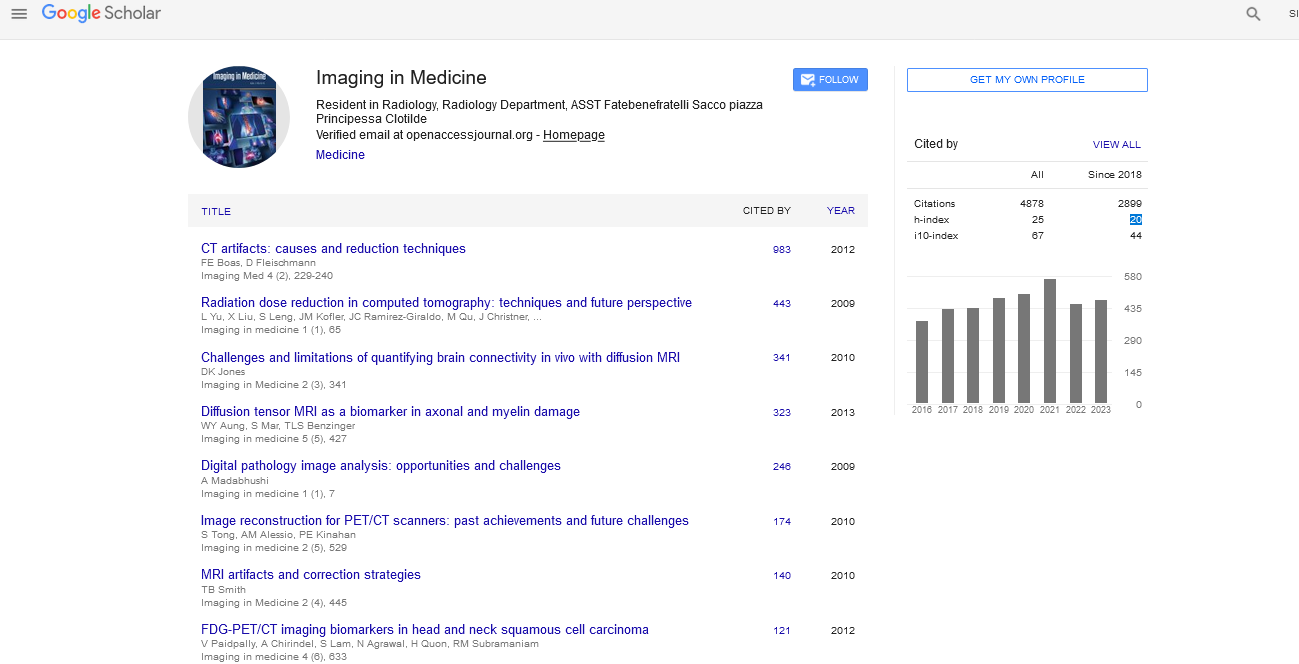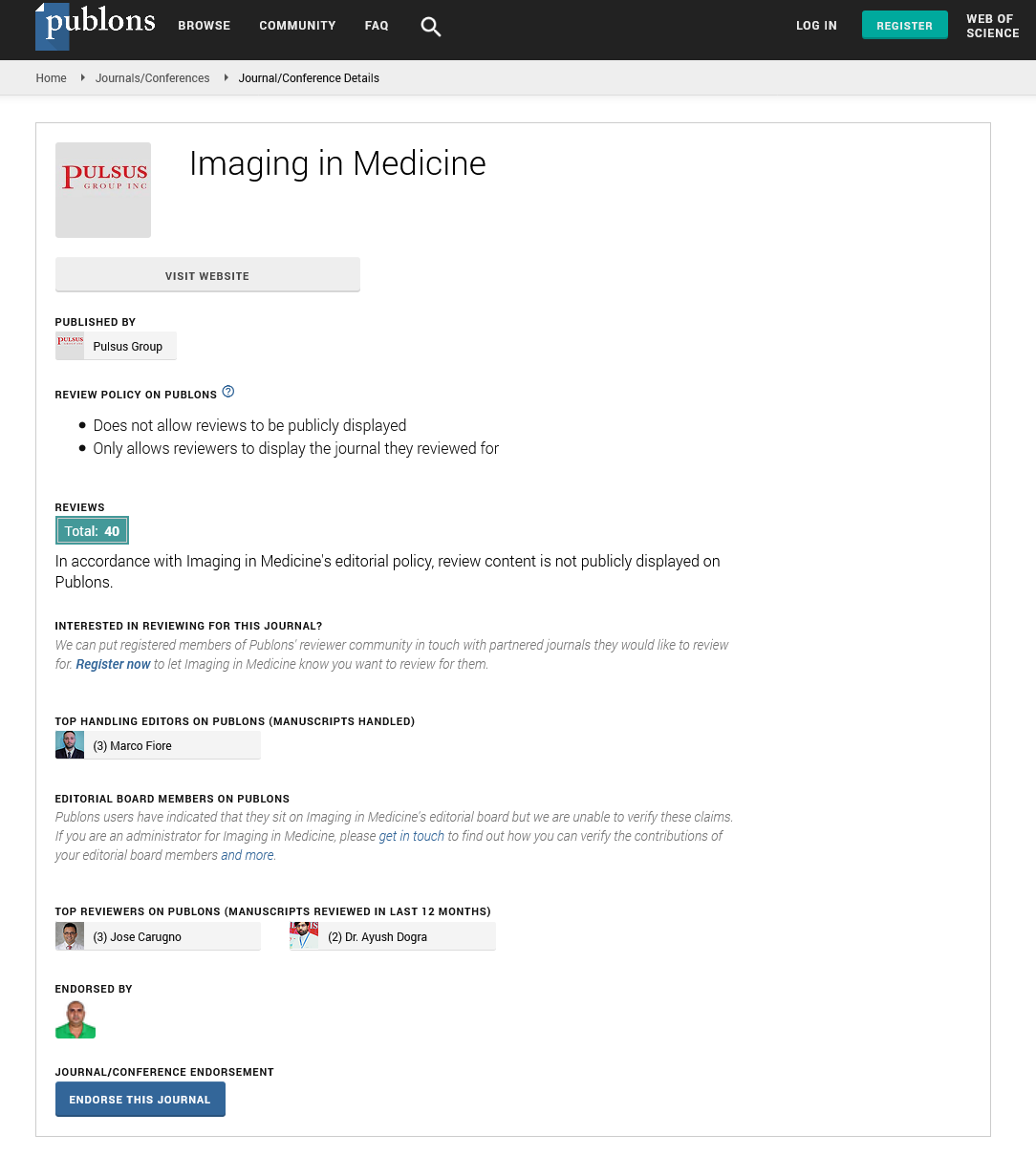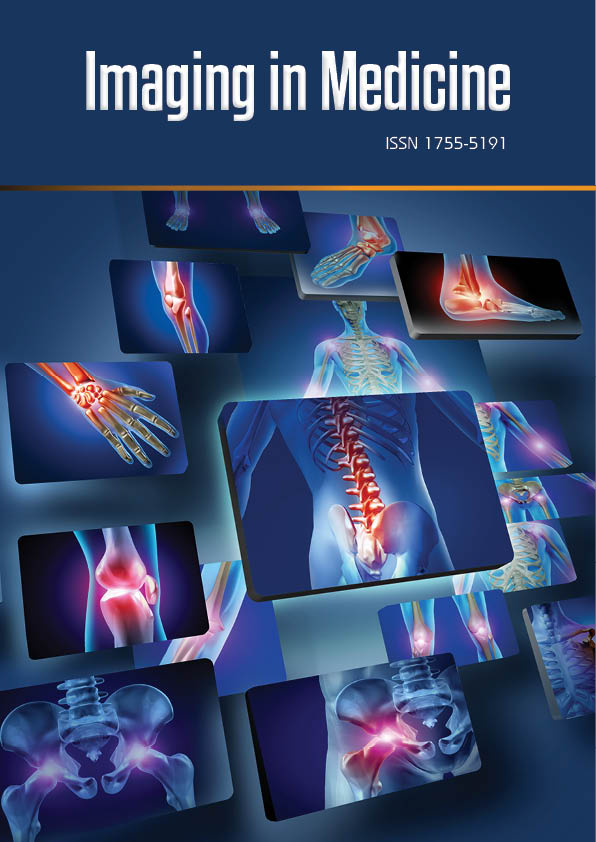Editorial - Imaging in Medicine (2025) Volume 17, Issue 1
Computed Tomography (CT): A Window Into the Human Body
Jessica Preez*
Department of Radiology, Dartmouth Hitchcock Medical Center, Lebanon
- *Corresponding Author:
- Jessica Preez
Department of Radiology, Dartmouth Hitchcock Medical Center, Lebanon
E-mail: p_jessica@yahoo.com
Received: 17-Jan-2024, Manuscript No. fmim- 25-169964; Editor assigned: 20-Jan-2024, PreQC No. fmim-25-169964 (PQ); Reviewed: 04-October-2024, QC No. fmim-25-169964; Revised: 14-Jan-2024, Manuscript No. fmim- 25-169964 (R); Published: 21-Jan-2024, DOI: 10.47532/1755-5191.2025.17(1).1-3
Introduction
Computed Tomography (CT), often referred to as a CT scan or CAT scan, is one of the most significant innovations in modern medicine [1]. By combining X-ray technology with computer processing, CT produces cross-sectional images of the body, allowing doctors to view internal structures in remarkable detail. Since its introduction in the 1970s, CT has become an indispensable diagnostic tool in hospitals and clinics worldwide, playing a crucial role in detecting disease, guiding treatment, and saving lives.
How CT Works
CT scanning involves rotating an X-ray beam around the body while detectors capture multiple images from different angles. A computer then processes these images to generate detailed slices of the body’s tissues and organs. These slices can be stacked to create 3D images, providing doctors with a comprehensive view of the area being examined. Unlike traditional X-rays, which produce a single flat image, CT scans can differentiate between bone [2], soft tissue, and blood vessels with much greater accuracy.
Applications of CT
CT scans are used in nearly every area of medicine. Some of the most common applications include:
Emergency Care: In trauma cases, CT scans can quickly detect internal bleeding, fractures, or organ damage, enabling doctors to make fast, life-saving decisions.
Cancer Detection: CT imaging helps identify tumors, determine their size and location, and assess whether cancer has spread.
Cardiology: CT angiography is used to visualize blood vessels and identify blockages or aneurysms [3].
Neurology: Brain CT scans can reveal strokes, head injuries, and brain tumors with high precision.
Orthopedics: CT helps evaluate complex bone fractures and joint conditions that may not be clear on plain X-rays [4].
Advantages of CT
The widespread use of CT can be attributed to its many benefits:
Speed: CT scans are quick, often completed in just a few minutes, making them ideal for emergencies.
Accuracy: They provide highly detailed images, improving diagnostic precision.
Versatility: CT can be used for almost every body part and for both acute and chronic conditions.
Guidance: CT scans often guide biopsies, surgeries, and other minimally invasive procedures.
Risks and Limitations
Despite its benefits, CT scanning is not without risks. The primary concern is exposure to ionizing radiation, which is higher than that of standard X-rays. While the risk from a single scan is minimal, repeated exposure over time can increase the chances of radiation-related complications. Additionally, CT scans often require the use of contrast agents, which can cause allergic reactions or kidney issues in some patients. Cost and accessibility can also be limiting factors in certain regions.
Future Directions of CT
Advances in CT technology are focused on reducing radiation exposure, improving image resolution, and expanding its applications [5]. Modern CT scanners can produce high-quality images with lower doses of radiation, making the procedure safer. Artificial intelligence is also being integrated into CT imaging, assisting radiologists in detecting subtle abnormalities and streamlining workflows. Portable CT scanners and faster imaging speeds are expected to make this technology more accessible and efficient in the near future.
Conclusion
Computed Tomography has revolutionized the way physicians view and diagnose conditions within the human body. From emergency care to cancer detection, CT scans have become a cornerstone of modern medicine, enabling faster diagnoses and more effective treatments. While concerns about radiation and cost remain, ongoing innovations continue to make CT safer, more accurate, and more widely available. As technology advances, CT will remain an essential tool, offering deeper insights into human health and shaping the future of patient care.
References
- Mamikonyan VR, Pivin EA, Krakhmaleva DA. Mechanisms of corneal neovascularization and modern options for its suppression. Vestn Oftalmo. 2016; 132(4):81-87.
- Gaigalaite V, Dementaviciene J, Vilimas A, Kalibatiene D. Association between the posterior part of the circle of Willis and vertebral artery hypoplasia. PLoS ONE. 2019; 14(9): e0213-226.
- Anri S, Masayoshi O, Shigeru H. Glomerular Neovascularization in Nondiabetic Renal Allograft Is Associated with Calcineurin Inhibitor Toxicity. Nephron. 2020; 144 Suppl 1:37-42.
- Mujagic S, Kozic D, Huseinagic H, Smajlovic D. Symmetry, asymmetry and hypoplasia of intracranial internal carotid artery on magnetic resonance angiography. Acta Med Acad. 2016; 45:1- 9.
- Rusu MC, Vrapclu AD, Lazar M. A rare variant of accessory cerebral artery. Surg Radiol Anat. 2023; 45(5):523-526.
PubMed, Google Scholar, Crossref
PubMed, Google Scholar, Crossref
PubMed, Google Scholar, Crossref
PubMed, Google Scholar, Crossref


